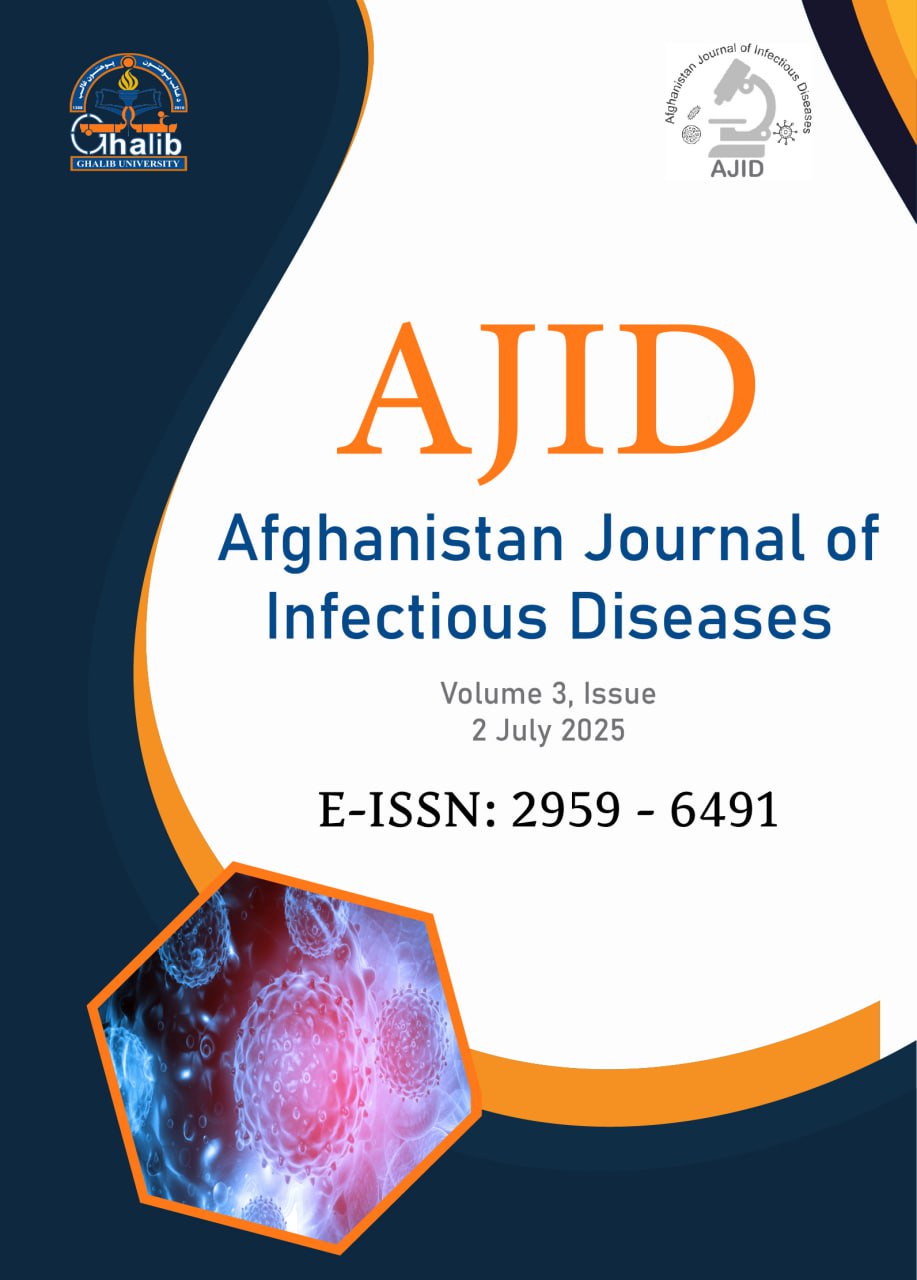Rapid Diagnosis of Acanthamoeba Keratitis by Iodine Staining of Corneal Scrapings
Main Article Content
Abstract
Background: Early and accurate diagnosis of Acanthamoeba keratitis is crucial for appropriate clinical management, preventing permanent corneal damage, scarring, or even perforation. We aimed to introduce a rapid diagnostic method for A. keratitis.
Methods: Corneal scrapings from 21 patients with culture- and PCR-confirmed A. keratitis were evaluated using Giemsa and iodine staining. All cases were referred to Farabi Eye Hospital, a tertiary care center in Tehran, Iran, for specialized evaluation and management.
Results: Acanthamoeba was detected in 42.33% of samples stained with Giemsa and 100% of samples stained with iodine.
Conclusion: Iodine staining is a simple, cost-effective, and rapid method for diagnosing A. keratitis.
Article Details

This work is licensed under a Creative Commons Attribution 4.0 International License.
References
Marciano-Cabral F, Cabral G. Acanthamoeba spp. as agents of disease in humans. Clin Microbiol. 2003; 16:273–307.
Awwad ST, Petroll WM, McCulley JP, Cavanagh HD. Updates in Acanthamoeba keratitis. Eye Contact Lens. 2007; 33:1–8.
Niederkorn JY, Alizadeh H, Leher H, McCulley JP. The pathogenesis of Acanthamoeba keratitis. Microb Infect.1999; 1:437–43.
Niederkorn JY, Alizadeh H, Leher HF, McCulley JP. The immunobiology of Acanthamoeba keratitis. Springer Semin Immunopathol. 1999; 21:147–60.
Bacon AS, Frazer DG, Dart JK, et al. A review of 72 consecutive cases of Acanthamoeba keratitis, 1984–1992. Eye. 1993; 7:719–25.
Illingworth CD, Cook SD. Acanthamoeba. keratitis. Survey Ophthalmol. 1998; 42:493–508.
Martinez AJ. Free-living amebas and the immune deficient host. In: IX International Meeting on the Biology and Pathogenicity of Free-living Amoebae Proceedings, 2001; pp 1–12.
Auran ID, Starr MB, Jakobiec FA. Acanthamoeba keratitis: a review of the literature. Cornea. 1987; 6:2-26.
Mathers WD, Sutphin JE, Folberg R, et al. Outbreak of keratitis presumed to be caused by Acanthamoeba. Am J Ophthalmol. 1996; 121:129–42.
Walochnik J, Obwaller A, Aspock H. Correlations between morphological, molecular biological, and physiological characteristics in clinical and nonclinical isolates of Acanthamoeba spp. Appl Environ Microbiol. 2000; 66:4408–4413.
Stothard DR, Schroeder-Diedrich JM, Awwad MH, et al. The evolutionary history of the genus Acanthamoeba and the identification of eight new 18S rRNA gene sequence types. J Eukaryotic Microbiol 1998; 45:45–54.
Roven JL, Doerr CA, Vogel H, Baker CJ. Balamuthia mandrillaris: a newly recognized agent for amebic meniningoencephalitis. Pediatr Infect Dis J. 1995; 14:705-10.
Gullett J, Mills J, Hadley K, Podemski, et al. Disseminated granulomatous Acanthamoeba infection presenting as an unusual skin lesion. Am J Med. 1979; 67:891-6.

